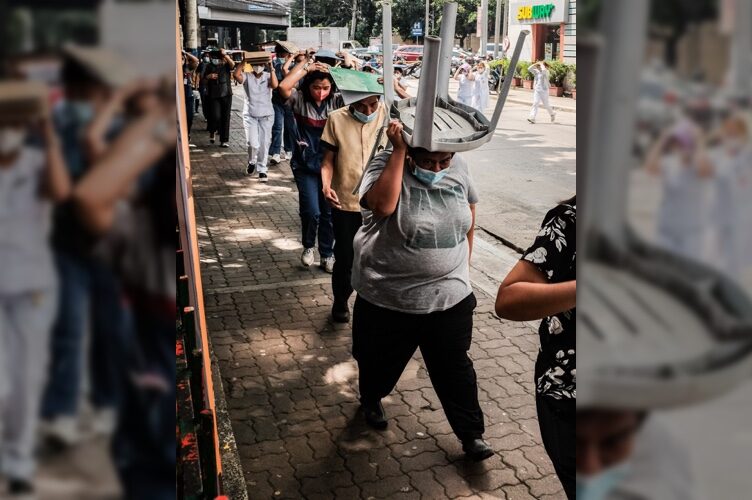FIFTEEN people died after the onslaught of Severe Tropical Storm Enteng (Yagi) in the Philippines according to the Office of Civil Defense (OCD). Aside from this, 21 people have gone missing as a result of the storm. 15 are fishermen from Camarines Norte, three from Samar, two from Northern Samar, and one from Biliran.
Of the deaths recorded, eight came from Antipolo, Rizal, one from Negros Occidental, two from Cebu City, two from Northern Samar, and two from Naga City. These were caused by drowning, landslides, collapsed ripraps, and/or electrocution.
In total, 442,804 families – 1,720,568 people – were affected by Enteng. The Department of Agriculture notes that the amount of damage done to crops amounted to PHP 350.85 million, while the production loss amounted to 14,814 metric tons. 13,623 farmers were heavily affected.
The damage done to infrastructure, on the other hand, amounts to PHP 200,000, with 538 houses partially destroyed and 51 totally destroyed.
To aid those affected by the storm, the Department of Social Welfare (DSWD) has sent 133,000 family food packs to those affected heavily by Enteng, and another 100,000 will soon be sent to new evacuees.
In total, they have distributed over PHP 16 million to aid the 303,938 affected in the areas of Cagayan Valley, Central Luzon, Bicol Region, Western, Central, and Eastern Visayas, Calabarzon, and Metro Manila.
The Government Service Insurance System (GSIS) has also said that it would extend its emergency loan program to give financial aid to those who come from typhoon-hit areas.
With PAGASA stating that three tropical cyclone-like vortices that may develop into a cyclone may enter the Philippine area of responsibility, President Ferdinand Marcos Jr. said that different government agencies need to start heavily preparing for it.
He stated that government agencies are currently relying on the forecast of PAGASA to help them know what to do, but knows that the weather can still be unpredictable even with said forecasts.
He has since instructed Social Welfare Secretary Rex Gatchalian to continue giving out relief goods.
As per Marcos: “We must assume that whatever we do now for the immediate needs of the people who are in the areas have been hit hard, let us think that another one is coming.”
Past promises of a flood control plan
Storm Enteng heavily affected several areas in the country, with many parts of it immersed deeply in floods. Several parts of Metra Manila and Antipolo, for example, were flooded.
The police also report that in Naga City, Camarines Sur, where the floodwaters had swamped a number of communities, two residents died.
In Cavite and Northern Samar, the floods reached up to people’s waists and chests. In Cainta, Rizal, over 600 families had to stay in different evacuation centers because the entire municipality had been flooded.
One can’t help but question, then: What happened to the flood control plan that was promised to the Filipino people?
In July of this year, President Ferdinand Marcos Jr. said that the country needed a flood control masterplan given the more torrential rains that were expected to come in during typhoon season, which was going to be even worse due to factors like La Niña and climate change.
He explained that the country needed a flood control plan that would cover several regions and would take note of the changing weather patterns.
At the time, he said: “Let’s prepare for the next flood. This is the first typhoon in La Niña. This might be prolonged. So, we have to prepare for that. Let’s think about preparing for that.”
While former public works and highways secretary Rogelio Singson had already made a master plan to be implemented over two decades, Marcos wanted to expand this even further.
He gave many suggestions to be added to this plan, including the building of a weir to better help control the water flow from Sierra Madre to Rizal and Metro Manila.
Despite these promises, however, there are still people dying, missing, and losing everything in the storm.
Even when it was first announced, numerous scientists, environmental advocates, and legislators expressed doubts about this plan. They noted that the current administration often relies on flood control infrastructure which has already been proven ineffective by Super Typhoon Carina.
No matter the number of promises one makes, they mean nothing if they do not actually help the Filipino people.
They remain empty promises and nothing more, and the entire country continues to suffer.
How useful was this post?
Click on a star to rate it!
Average rating 0 / 5. Vote count: 0
No votes so far! Be the first to rate this post.
We are sorry that this post was not useful for you!
Let us improve this post!
Tell us how we can improve this post?









